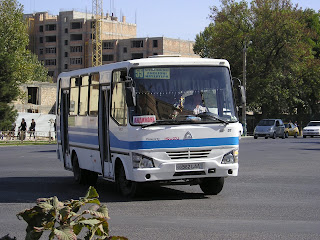Leaving York for the day.
As a visitor to York there can be very few reasons for wanting to leave this beautiful city with all of the history contained within the wall. There comes a time however to explore and this bus trip is one of the more unusual.
With three lengthy journeys today a hearty breakfast is called for, I recommend Baileys cafe and tea rooms for quick and cheap or Brew and Brownie for the pancakes, both on Museum Street. It is then a short walk to Piccadilly for the 10am departure of East Yorkshire service number X46 to Hull.
On this occasion we have a Volvo with MCV body offering a very comfortable ride. The X46 follows A1079 for much of the journey, leaving York via Walmgate it is several miles before the first turning off into the village of Pocklington. The main bus stop is located in the East Yorkshire bus depot, a mere shadow of its former glory, an edifice to the heyday of the bus.
Leaving Beverley through the new sprawling housing estates, Hull comes into view across the bleak flat fields that divide the two communities. The X46 takes a convoluted route through Hull city centre venturing down to the rejuvenated water front before heading into the modern bus station adjacent to the railway station. Arriving here gives the opportunity for bus photography in the layover area behind the departure bays and easy access into Hull city centre.
3.15pm at Stand D in Hull bus station is the vital timing point on this journey, it is the final weekday departure of Stagecoach X62 (simpliExpress) to Leeds. Originally envisaged as a coach service the double-deckers now operating the route still use the coach bays in Hull and Leeds bus stations.

Leaving Hull on the A63 along the Humber shoreline the first of what will be many diversions away from the direct route happens at North Ferriby followed quickly by a trip through Brough before rejoining the A63 just prior to it becoming the M62. A long fast stretch along the M62 follows, motorway journeys seem more interesting from the top deck of a bus, eventually the service deviates away from the motorway again, heading into Howden on the northern side of the road. Crossing the River Ouse and over the motorway the next large residential district is Goole, before returning to the M62 for a sprint to junction 34 and a strange little loop around the village of Eggborough.
Up until now no passengers have boarded or alighted since Hull, but this is about to change as we arrive at Glasshoughton and the Junction 32 Shopping Outlet centre. With a mass of shops and leisure facilities, Stagecoach market this as a major attraction on the route, the service also provides the fastest direct route into Leeds city centre. Returning to the M62 the service eventually joins the M1 north bound before reaching Leeds city centre via the M621 and a slow crawl through rush hour traffic, arriving 30 minutes late into the coach bays at the rear of the bus station.
Rush hour Leeds
After a long afternoon of inactivity the legs need some action so a walk around Leeds city centre to admire the buses during rush hour is called for, as is a cup-of-tea. By early evening there is little point to taking the scenic route back to York. Transdev offer the CityZap direct frequent service between Leeds bus station and York via the A19.
The refurbished Volvo with Wrightbus body provides a comfortable way to end the day, sitting on the top-deck in sumptuous leather seats whilst gloating at irate drivers suffering on their daily commute along the A19.
Ten hours after it started, the journey comes to an end back in the beautiful city of York.
Time for a pint!
Time for a pint!













































